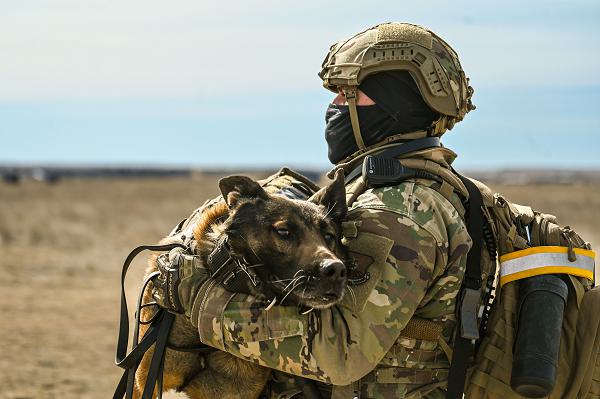
F.E. Warren Air Force Base, Wyoming. (April 5, 2025): This sprawling base is home to the Air Force’s 90th Security Forces Squadron which is responsible for training K-9s to become a warfighters best friend. In this photo by Airman 1st Class Mattison Cole, Senior Airman Dariel Gonzalez Ramos, a military working dog handler, carries his partner Rex after being fired upon by opposing forces during substance detection training.
Detection training for Military Working Dogs (MWDs) and their handlers is focused on nuclear security, explosives, drugs, and identifying human remains. K-9’s are conditioned by their handlers to associate specific scents with rewards, starting with controlled environments and gradually introducing real-world scenarios.
Target scents include narcotics like cocaine, heroin, methamphetamine, marijuana and various explosives. Handlers use positive reinforcement, such as treats, toys, or praise to reinforce proper behaviors. Often a toy is used as a marker for the specific odors and dogs quickly learn to associate the toy with the scent. Another method, called Shape Signal, involves using hand gestures or a clicker to identify an odor and the animal is given praise and treats for successful detections.
The next step is to continue these drills outside a controlled environment to ensure the dogs can continue to perform despite various environmental distractions. These settings include cars, buildings, or large outdoor crowds.
As a tribute to these four-legged warriors, the Army established K-9 Veterans Day in 1942. Ever since, MWDs have been considered active duty servicemembers who earn non-commissioned rank, awards, and service medals. In 2000, Congress passed “Robby’s Law” which ended the practice of euthanizing MWDs at the end of their working career and instead allowed adoption by their handlers. These highly intelligent beings are credited with saving countless American lives.


